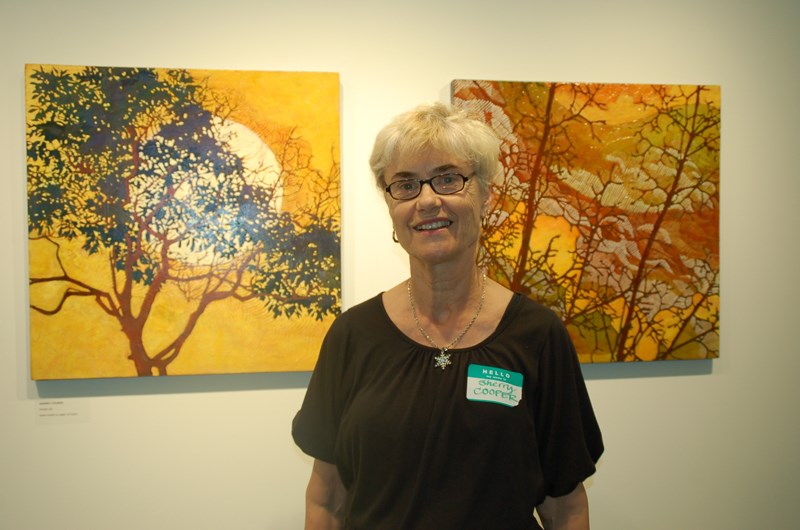Organizers of the current show, Our Forest, at the Gibsons Public Art Gallery intend to celebrate and provoke discussion around the forest that surrounds and sustains us.
All of the 22 artists in the group show — or 31 artists if you count nine quilters from the Out of Bounds group — are local people and the images they depict in paint, glass, felt, bark, fabric or mixed media surround our neighbourhoods. But most of the pieces, except for three, have landed on the side of celebration rather than that of provocation.
Of the three, Ed Hill, one of the show’s instigators, pulls no punches with his piece titled Our Community Forest. He employs his story-telling skills to describe in a text alongside the piece exactly what was lost when a specific local area was clear cut. Barry Haynes, too, supports his art with facts during his photographic slide show. They depict before and after scenes of a forest in its glory followed by the denuded version.
Marleen Vermeulen’s dramatic, textured oil painting makes a statement. Her forest scene deteriorates from lush green to the weathered grey of dead wood.
However, many of the other works are only subtly provocative in the sense that they capture the beauty of the forest, and they show a gentle respect from the artist for their subject matter. But they stop there.
Certainly the viewer feels regret that these works of nature might be lost to logging, fire or mudslide, but is helpless to know what to do about it. There is no finished wood art on display at the show, no depictions of humans using freshly cut trees in a sustainable way, no protesters in front of bulldozers, no slugs, no salmon-and-bear cycle of life, no insects or animals, other than Susan Furze’s glass panel that introduces a few of the creatures that dwell in the woods.
Viewers enter the show through a forest represented in wall hangings — textile art by the Out of Bounds quilters.
Ursula Bentz also uses fabric, particularly felt, to create her Once Upon a Tree. Motoko’s non-representational diptych seems to capture the spirit of the rain forest. Pat Ridgway, who has been painting and protecting the woods for years, takes the viewer into its dark, shady heart with her piece, Wilson Creek Forest.
Roger Handling’s piece, Forest Streams (Elphinstone), in charcoal and oil, is striking. Cindy Riach depicts fallen trees returning to the earth.
Bradley Hunt works with red cedar and acrylic in his carving, A New Reflection.
Those who zoom in to the forest floor offer more.
Alan Sirulnikoff’s photo, Forest Lichen, deserves a second look — it reveals an intricate pattern.
Jan Poynter also examines the patterns and rhythms of nature.
Robyn Hume’s photos take the viewer up close to humble plants such as St. John’s Wort and Devil’s Club. Another small work of art tucked away is not to be missed — a cedar woven basket by Jessica Silvey, demonstrating an original use for tree bark by First Nations people.
Many events are planned around the show. A series of guided hikes on the new Community Wellness Trail is offered on this Sunday, Aug. 31, Sept. 7 and 14.
Next Sunday, Sept. 7 from 1 to 3 p.m. the public is invited to Essence of Our Forest with Barb Higgins Xwu’p’alich, and Hume.
For more creative and literary events, see www.gibsonspublicartgallery.ca.
Perhaps they will provoke much needed discussion on this important topic.



